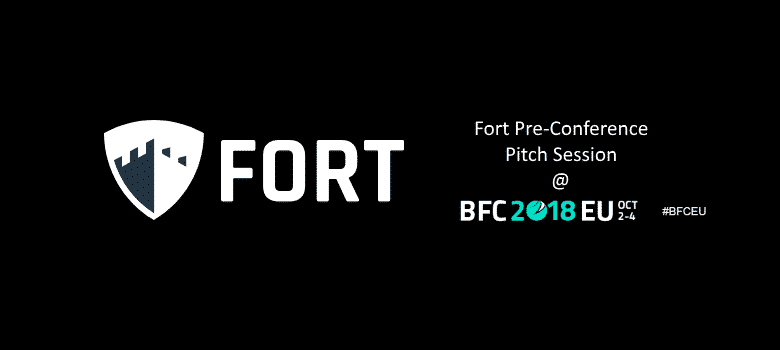As part of the Blockchain For Finance Conference 2018 in Dublin’s Aviva Stadium, the IFSC’s Dogpatch Labs hosted a pre-conference pitch session attended by about 60 people. The third talk was about the Fort network, and was given by Matthew Arnett, the company’s CEO and looked at their platform for linking real-life assets with non fungible tokens (NFTs).
The platform aims to enable liquidity for a range of sectors with real-life assets (ranging from precious metals, property, artwork etc), by creating non fungible asset-backed tokens and uses the ERC721 token popularised by Crypokitties to tokenise illiquid assets. The platform builds a protocol layer on top of a blockchain (in this case ethereum), which sits among an off chain custodial layer, audit, security, asset management and verification layer, and in short enables people who hold assets to create tokens for verifiable real-life assets, which can then be traded. It aims to bridge dAPPs, ERC1155 templates, the fort protocol and a blockchain platform layer.
The platform has been designed to address a number of challenges surrounding digitising assets, namely provenance, governance, transparency, custodianship and liquidity, with the Fort protocol aiming to particular work on the latter two. The example he gave was a painting, where a museum is a custodian, and if they wanted to sell parts of it, they could issue 100 tokens which relate to 1% ownership of the painting, and enable them to sell parts of the painting. The painting would remain held in the museum on display, although the ownership could be shared without moving it (or tearing it to shreds á la Banksy).
People using the platform can sign into the Fort terminal, which lists a range of different items which can be bought, sold and leveraged. On top of this is a super dApp which is linked to all stakeholders who are informed of ownership changes as they occur. The platform also has a NFTwerks platform, which is a white-label solution for different sectors. Banks or traders can plug this into their system to build out an ecosystem, or developers can build their own dApps on the protocol, with equity providers, investment funds or real estate companies mentioned as examples.
He then went onto showcase some live examples, where they have partnered with a gold and silver bullion provider, and enable people to buy gift vouchers for gold which can be purchased with fiat, wire transfer or cryptocurrencies. I asked what would happen if someone wanted to redeem the voucher for gold, and he said that it’s held in custody of the bullion company, so while you own the gold, you can’t get it in your hand.
A second example he showed was a partnership they have with NGC, a dealer of rare coins. They have a particular coin which only has 14000 which are held in their US based vaults, and they have tokenised them to enable people to own them.
Fort is also looking to build a Non Fungible Token alliance to build inter-operable systems running on the ethereum and neo blockchains.
After the talk, the crowd asked a couple of questions. Who are their partners? Capgo is their distribution partner, with NGC being their custodial partner. Another question arose about handling money laundering, and Matthew explained that the platform has an AML/KYC wrapper. While you can buy into the platform without, if you want to move or sell your tokens, KYC/AML is required via World Check.
The following day at the conference, I caught up with Matthew to get some more questions outside of the pitch environment. First up I asked why he was in Ireland, and he replied that they are looking at where they want to position themselves within the European market, as there are custodians already here, data centres here and to generally build relationships. Next I mentioned that Irish regulations haven’t kept up in the crypto space with other jurisdictions such as Malta, and he said that while this may be the case, Irish regulations around custodianship are already in place and established. All an existing custodian would need to do is build a dApp to use with existing assets. Fort aren’t themselves doing banking, as they’re a platform provider.
One topic not mentioned during their pitch was how they’ll make money from the platform, so Matthew explained there’s a few approaches. Firstly, they have the NFTwerks platform, around which they can make money from training and transaction fees. They can also charge for platform customisation and a subscription fee to use the platform. The platform is b2b, and the terminal where people can buy the assets is consumer facing. The platform is also in closed beta at the moment, starting with NFT for Gold and Silver. Going forward, they’ve three tiers of users they’re looking at, firstly existing people who sell already as brokers and distributors, with an existing userbase. Secondly, they’re targeting existing wealth management companies, for example Capco’s partnership will allow them to offer NFT as a new class of commodity. Their third target market is the general public, who already have a portfolio.
I then asked how they’ve raised funds so far, did they do an ICO? He said they didn’t go the ICO route and instead raised money privately, and are continuing to raise a bit more, and are using their own NFT to issue some equity after a vesting period. Give that they’re based in The Bahamas, I asked where their development team is based and he said they’ve 8 full time developers (expanding to 20) in Vietnam. If you’d like more information on the Fort Network, you can contact them at Fortnetwork.io



